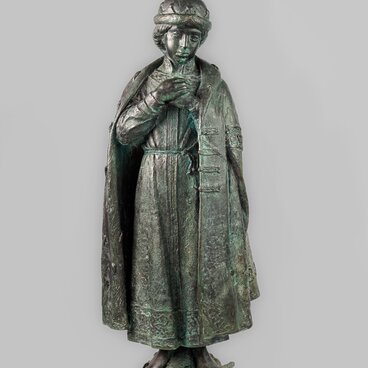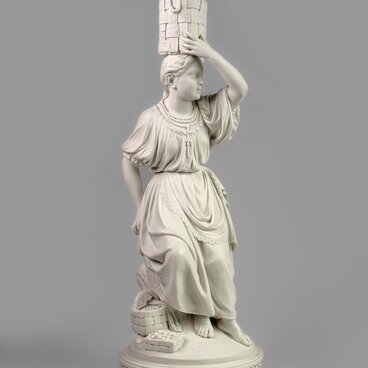The permanent exhibition of the Uglich Museum displays an “Order of the Faithful Saint Prince Dmitry of Uglich”, which was awarded not to an individual person, but to the city of Uglich. In 1997, by the decision of His Holiness Patriarch Alexy II of Moscow and All Russia, the city of Uglich was granted this high award for its undoubted merits in preserving the memory of the holy Prince Dmitry and raising the awareness of the heritage associated with his name.
The Russian word for “order” (“orden”) comes from the German “Orden” or Latin “ordo”, meaning “row”, or “order”. Modern orders originated in medieval spiritual and knightly orders. The first such orders appeared at the end of the Early Middle Ages, during the first Crusades. They united religious knights, and initially the concept of “order” meant a group of people bound by a common vow and a common goal.
In the Late Middle Ages, orders appeared that no longer represented an independent military force, but served as a sign of recognition of merit and proximity to the monarch. In the Middle Ages, the order was not awarded — instead, a person was ordained (initiated as a member of an order). Quite often, an order had a limit on the number of its members, which increased its prestige. By the time the Renaissance began, most European monarchs had either already introduced a knightly order into the state system or organized new orders to reward loyal subjects and especially military officers. Some of the highest modern awards in Europe, such as the Danish Order of the Elephant, were created in that era. Since the orders were of knightly origin, only a nobleman could become a member of an order.
In Europe, up until the 19th century, there remained a prohibition on awarding orders to commoners. In 1802, Napoleon I created the Legion of Honor; these orders began to be awarded regardless of the social status of a person, for bravery in battle or for 20 years of outstanding service. This order is still the highest award of France and served as a model for many other orders of the West, such as the Order of Leopold (Belgium, 1832) and the Order of the British Empire (Great Britain, 1917). Since the ancient systems of orders are invariably associated with undemocratic elitism, in countries that chose a non-monarchical path of development, such as the USA or the USSR, a new type of orders appeared, with a particular design and a specific awarding system.
The Russian word for “order” (“orden”) comes from the German “Orden” or Latin “ordo”, meaning “row”, or “order”. Modern orders originated in medieval spiritual and knightly orders. The first such orders appeared at the end of the Early Middle Ages, during the first Crusades. They united religious knights, and initially the concept of “order” meant a group of people bound by a common vow and a common goal.
In the Late Middle Ages, orders appeared that no longer represented an independent military force, but served as a sign of recognition of merit and proximity to the monarch. In the Middle Ages, the order was not awarded — instead, a person was ordained (initiated as a member of an order). Quite often, an order had a limit on the number of its members, which increased its prestige. By the time the Renaissance began, most European monarchs had either already introduced a knightly order into the state system or organized new orders to reward loyal subjects and especially military officers. Some of the highest modern awards in Europe, such as the Danish Order of the Elephant, were created in that era. Since the orders were of knightly origin, only a nobleman could become a member of an order.
In Europe, up until the 19th century, there remained a prohibition on awarding orders to commoners. In 1802, Napoleon I created the Legion of Honor; these orders began to be awarded regardless of the social status of a person, for bravery in battle or for 20 years of outstanding service. This order is still the highest award of France and served as a model for many other orders of the West, such as the Order of Leopold (Belgium, 1832) and the Order of the British Empire (Great Britain, 1917). Since the ancient systems of orders are invariably associated with undemocratic elitism, in countries that chose a non-monarchical path of development, such as the USA or the USSR, a new type of orders appeared, with a particular design and a specific awarding system.





